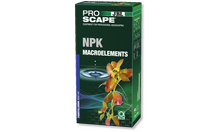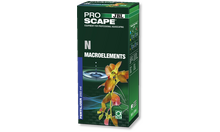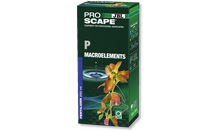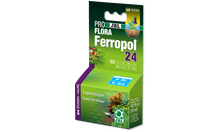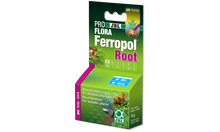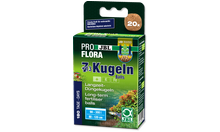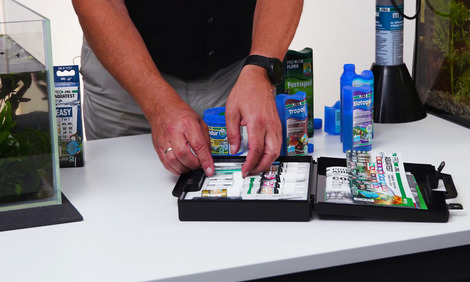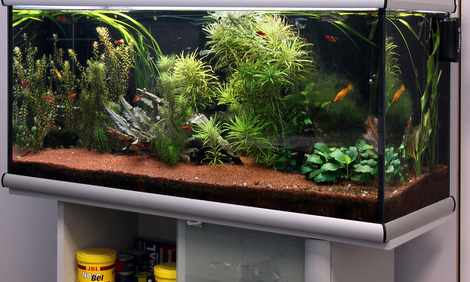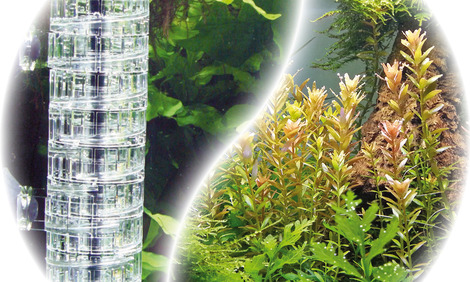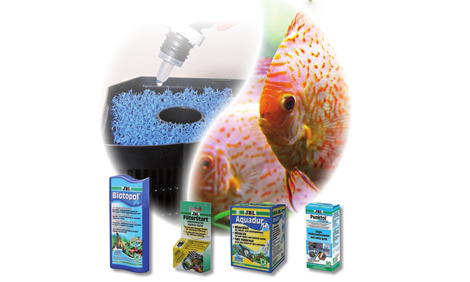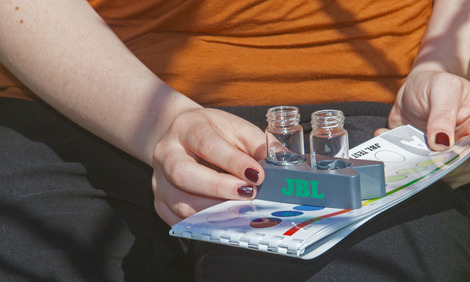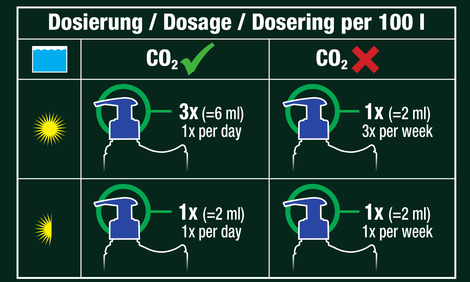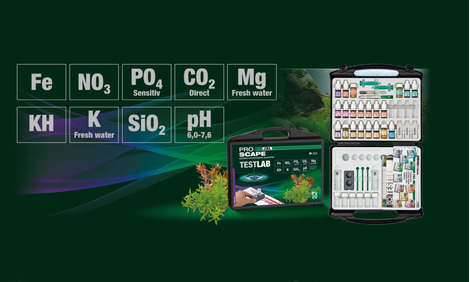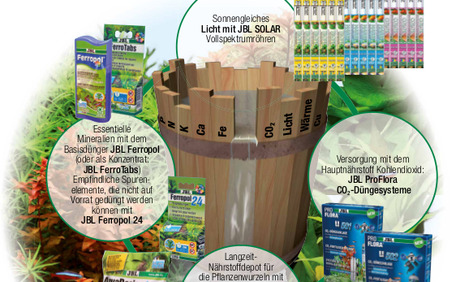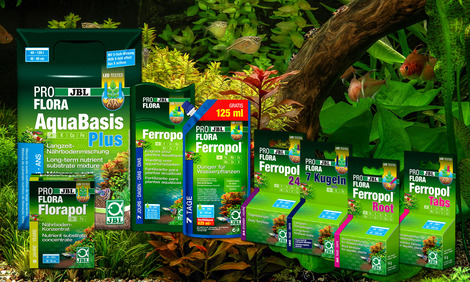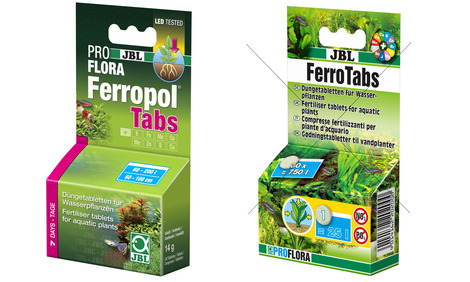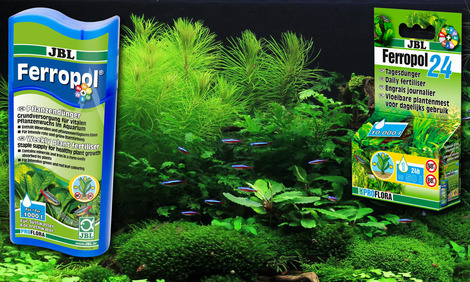Nutrition for aquarium plants
Healthy plants prevent algae growth. Healthy plants prevent algae growth, supply oxygen, remove pollutants, offer hiding places and reduce pathogens.
Heatlhy plants = healthy fish
For the plants to flourish the the following demands have to be met:
Light as an energy source for CO2 photosynthesis, nutrients and trace elements as growth promoters.
JBL fertilisers supply the plants with all main nutrients and essential trace elements. This way the plants can absorb all the required nutrients they need over the leaves and roots, and deficiency symptoms (e.g. iron deficiency) are thus prevented
JBL PROFLORA Ferropol Tabs
Plant fertiliser for freshwater aquariums
- Primary care for vigorous plant growth: fertiliser tablets for freshwater aquariums
- Vigorous plant growth, no deficiency symptoms thanks to minerals such as iron, potassium and other trace elements
- Optimal, intensive leaf colouring thanks to ideal iron concentration
- Optimal promotion of plant growth means less algae growth. No phosphates and nitrates
- Package contents: 1 packet FerroTabs, 30 tablets. Use: 1 tablet/25 l water for initial dosage and 1 tablet/50l water for redosage every week
You may also be interested in
JBL PROFLORA Ferropol Tabs
Properties
| Animal species: | Armored catfish, Arowana, Axolotl, Barbels, Bettas, Bichirs/reedfish, Blowfish, Catfish, Cichlids (South America), Clawed frogs, Clawed shrimps, Crayfish, Crustaceans, Danions, Discus, Dwarf crayfish, Dwarf shrimps, Flowerhorn, Gill maggots, Goldfish, Gouramis, Guppy, Juvenile fish, Killifish, Livebearers, Loaches, Mussels, Newts, Panchaxes, Rainbowfish, Snails, Spiny eels, Tetra, Veiltails, blood parrot cichlids, freshwater butterflyfish |
| Animal size: | For all animal sizes |
| Animal age group: | All aquarium fish |
| Volume habitat: | > 750 L |
| Material: | Potassium chloride, ethylenediaminetetraacetic acid, disodium salt, iron chloride, zinc chloride, boric acid, manganese dichloride, copper sulphate, cobald dichloride, polyvinylpyrrolidone, cellulose |
| Colour: | white / black |
| Dosage: | For newly set up aquariums, partial water change (only for refilled water volume):1 tablet per 25 l water Weeky re-dosing: 1 tablet per 50 l |
Electronic label / illuminant
| Mercury: | No |
| Dimmable: | No |
No, the active ingredients are bound in a cellulose matrix that does not dissolve immediately and ensures even distribution and addition. To do this, place the tablet in a spot with sufficient water movement and do not bury it. Refer to the instructions for use on your packaging for the quantity appropriate to your aquarium size.
Algae problems in an aquarium can never be traced to just one factor or general condition, and instead, are always the result of a combination of different factors, which include light, fertilization, water changes – specifically, how often and how much – feeding, fish population and, of course, the specific water parameters.
According to analyses that were performed over a course of a number of years, red algae, at least the common brush algae and beard algae, occur in descending order at the following parameters:
1) too little carbon dioxide (in relationship to 100 % of the measured tank); the pH level should be in the slightly acetic range, depending on the carbonate hardness, in every case.
2) elevated phosphate levels (over 90 %); phosphate limitation by means of JBL PhosEx ultra is often helpful here.
3) too little and too irregular fertilization (there should always be traces of iron at least).
4) insufficient water changes; a weekly water change of over 30 % is recommended for algae problems.
5) not enough fast-growing plants.
Generally, one should never change plant fertilizers abruptly. The fertilizers from different manufacturers have somewhat different compositions in terms of trace elements. This may cause temporary nutrient changes. It is best to change over in 3 steps:
1) Reduction of the old fertilizer by 1/3; replace this with 1/3 of the new fertilizer. Wait approx. 3-4 weeks and observe the reaction of the plants.
2) Reduction of the old fertilizer by 2/3; replace this with 2/3 of the new fertilizer. Wait approx. 3-4 weeks and observe the reaction of the plants.
3) Complete discontinuation of the old fertilizer and change-over to the new fertilizer.
It is important to observe the reaction of plant growth and, in addition, to check the iron content of the water at least 2x weekly. Whereas the value should never drop to 0, it should never exceed 0.2 mg/l if possible. However, short peaks are no cause for concern.
These measures should generally be carried out on a weekly basis, ideally right after a water change. This achieves better results than fertilizing in large doses at longer intervals.
Reviews
0 Reviews
5 more reviews in other languages
5 Reviews in other languages
Ich komme mit den Tabs super klar für meine Bodenzehrer. In manchen Becken verwende ich lieber die JBL PROFLORA Ferropol Root.
Perfect tablets for the substrate for plants. Thanks to them, my Cryptocoryne began to grow lush and densely. They contain all the necessary ingredients for plant growth. Plants grow beautifully after them. Even the limnophila aromatica which is quite picky began to grow. I recommend it as much as possible.
Facile à mettre en place, mes plantes gazonnantes se sont rapidement enraciné
Easy way to fertilize your substrate 👍















